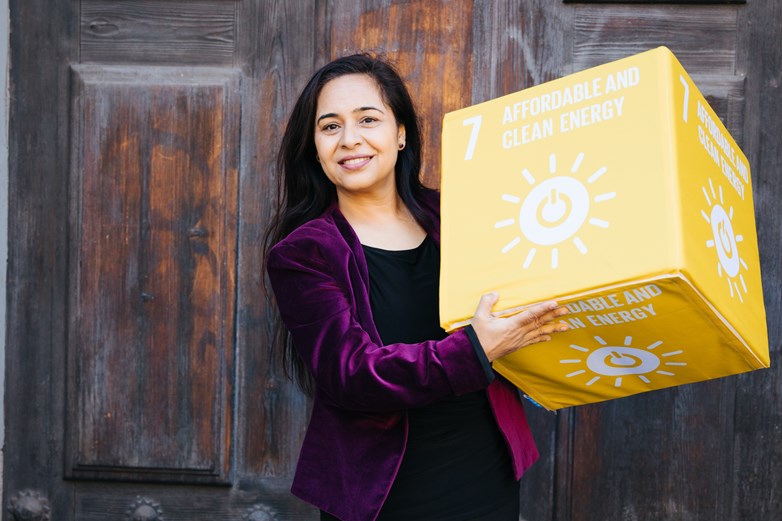“UN Agenda 2030: A utopian development plan for the world”
Ranjula Bali Swain. Photo: Juliana Wiklund.
"We see many examples of when socio-economic development, which is included in several of the global goals, occur at the expense of sustainable development. But it is not always that way. Investments in for example reduced inequality and reduced violence can lead to both socio-economic and sustainable development," says Ranjula Bali Swain.
Different focus needed in developing countries
Ranjula Bali Swain has also investigated the underlying social, economic or environmental pillars that are the most effective in achieving sustainable development. Her research reveals that in the short run, the developing and the developed countries may focus on different strategies for effective sustainable development.
"Though the environmental factors are significant for the developing countries, their short-term impact on sustainable development is small compared to the social and economic factors. Developing countries will thus attain the largest impact on sustainable development by focusing on policies that lead to economic and social development. Developed countries on the other hand have a greater chance to achieve sustainable development by focusing on the environmental and social SDGs," says Ranjula Bali Swain.
The goals are interlinked
Bali Swain and her colleagues' research is in line with other research visualizing the SDGs as an interlinked set of policies. For example, SDG 16 with its emphasis on promoting peaceful and inclusive societies and institutions, and SDG 17 with its focus on strengthening global partnerships, are goals without which achieving any of the other SDGs is impossible.
"The SDGs require transformative changes and uncomfortable choices but none of the goals can work effectively in silos, which is why we need to identify the community of policies that work in synergies for amplified impact", Bali Swain explains.
"Move the goal posts and the game loses its meaning"
The fact that the SDGs encompass every aspect of sustainable development is good – but also problematic, according to Bali Swain.
"In soccer, one scores a goal when one shoots the ball between the two goal posts. If the goal posts are constantly moving, ill-defined, or if one can shoot the ball in any direction and claim a goal, the game loses its meaning," she says. "Unlike the Millennium Development Goals (MDGs), the SDGs are not well-defined, thus measuring and monitoring them and evaluating the progress becomes challenging."
Huge demands on data
The17 SDGs have 169 underlying targets that are measured by 322 indicators. This places huge demands on data on a wide-range of variables which might not be available or collected by the national statistical offices, according to Bali Swain.
"For example, even for well reported variables like child mortality, only 136 countries track data whereas two-thirds of the 75 countries accounting for more than 95 per cent of all maternal, newborn and child deaths do not have records of births and deaths," Bali Swain explains.
Financial resources needed
Any development plan is only as good as the resources and finances you allocate. The 2019 Financing and Sustainable Development Report admits that the SDGs are under-financed. According to UNCTAD, US 5–7 trillion dollars is needed annually to finance the SDGs. The financing gap to achieve the SDGs in developing countries is still estimated to be about US 2.5–3 trillion dollars per year.
"Substantial finances and resources need to be raised and invested by the public sector, private sector and official development aid," Bali Swain emphasizes. "In addition, we need to address the global institutional architecture challenges like multilateral trading system, sovereign debt, and the global financial safety net."
Towards sustainable markets
About 193 countries have officially adopted the SDGs, but they are not officially binding. The countries draw their own voluntary national plans that may be presented to the UN High-level Political Forum (HLPF) for reviewing successes, challenges and lessons learned on achieving the 2030 Agenda for Sustainable Development.
"The challenges are monumental, but we are optimistic about the future. At Misum, we are in pursuit of investigating the transformative changes needed to achieve Agenda 2030," concludes Ranjula Bali Swain.
Interviewed and written by Emilie Eliasson Hovmöller




